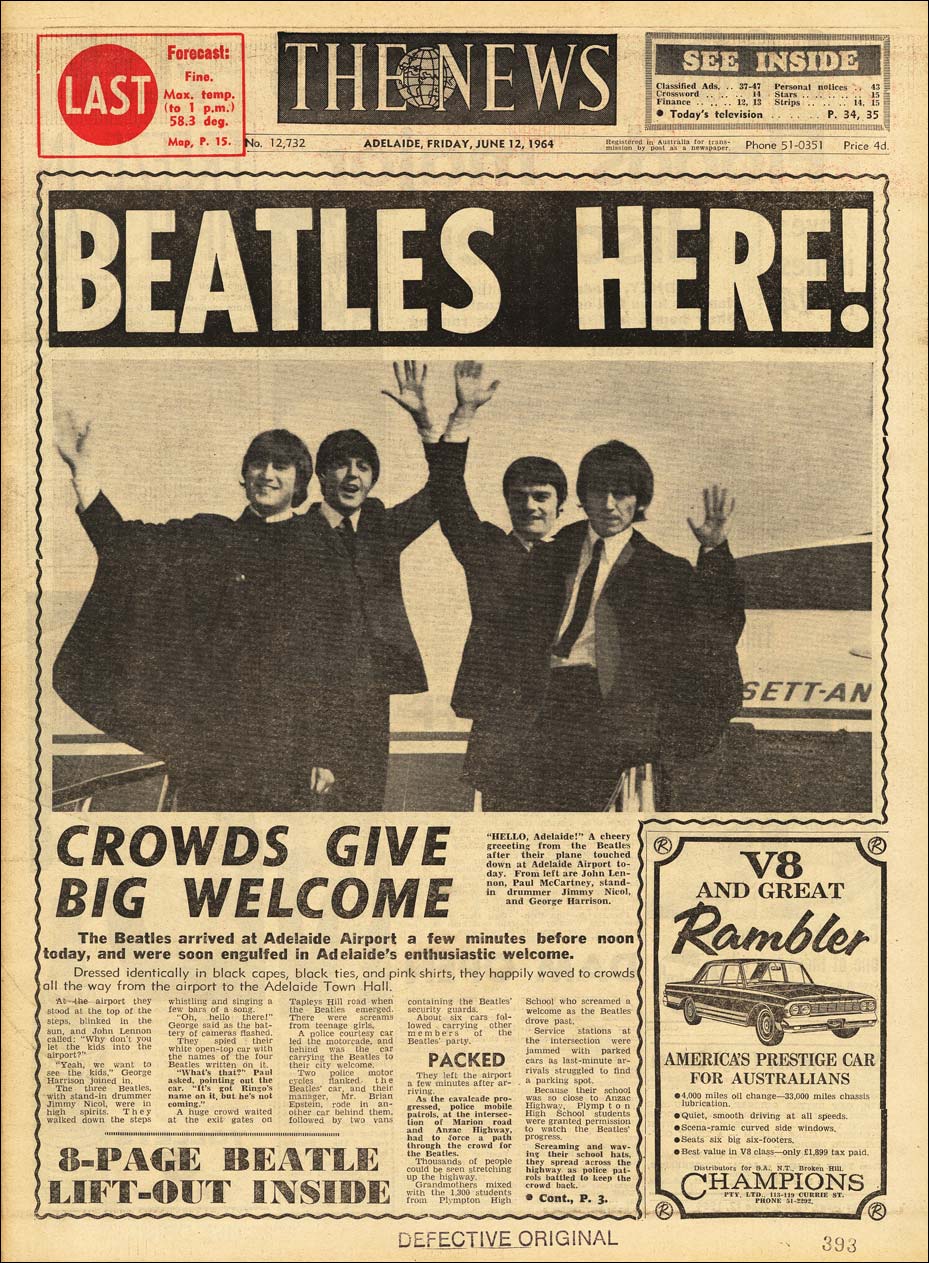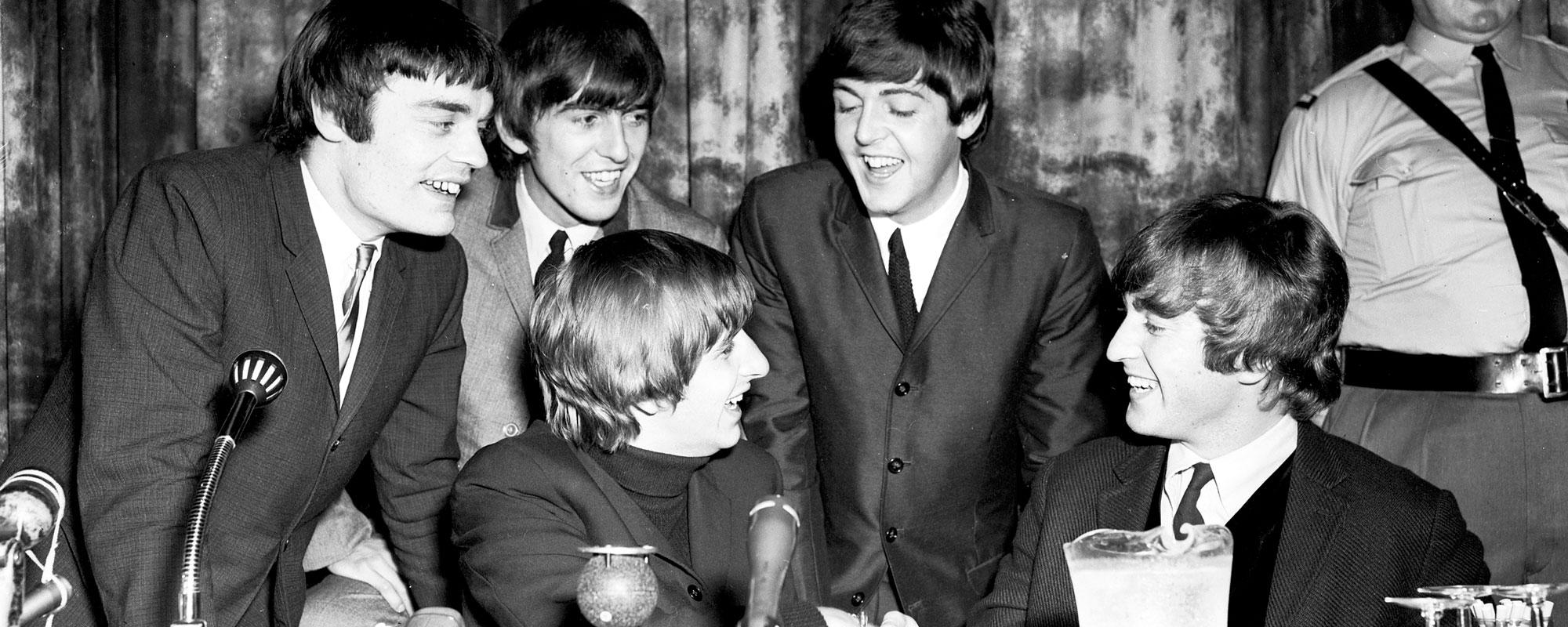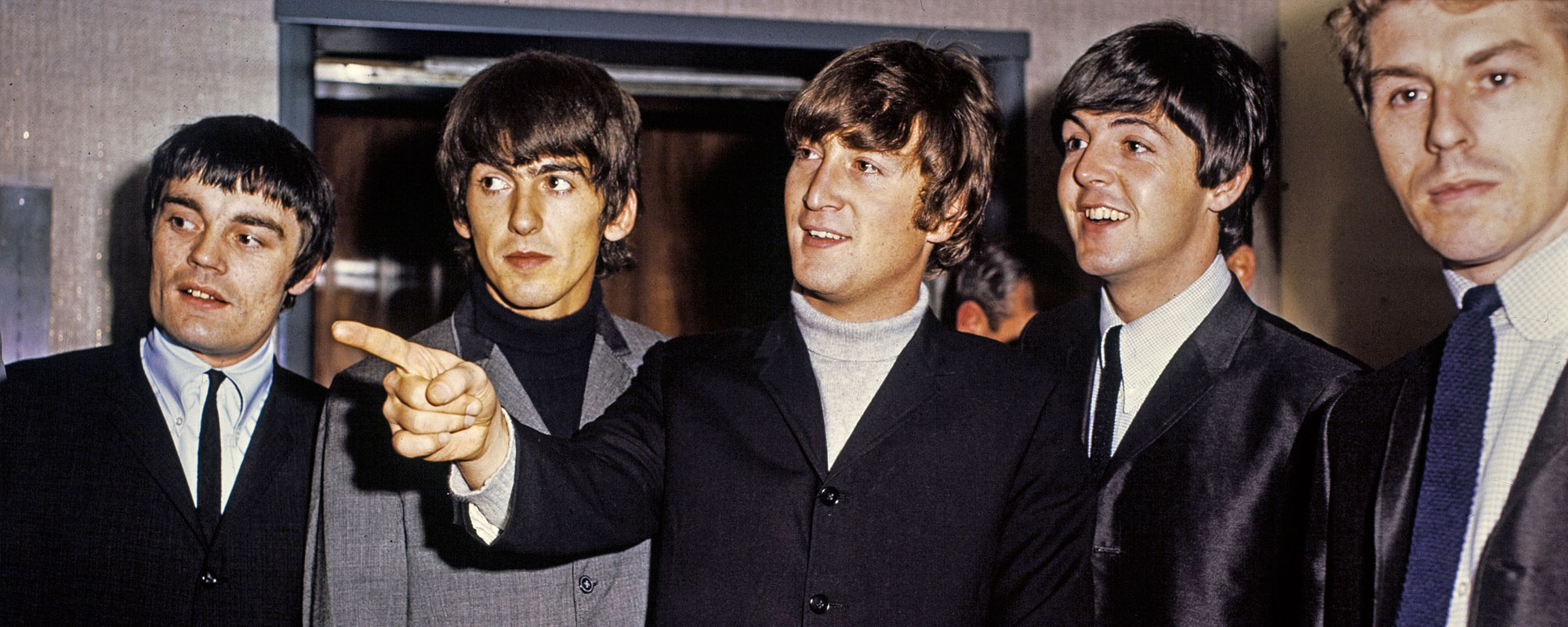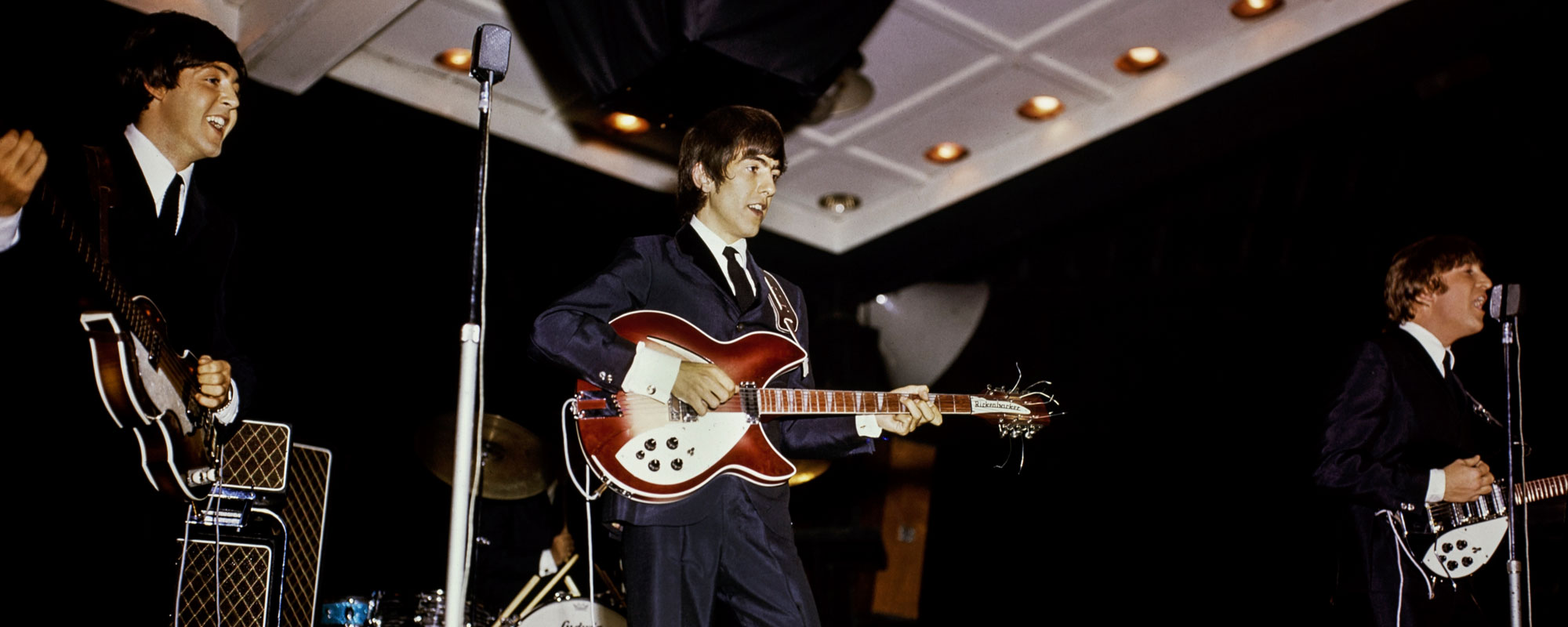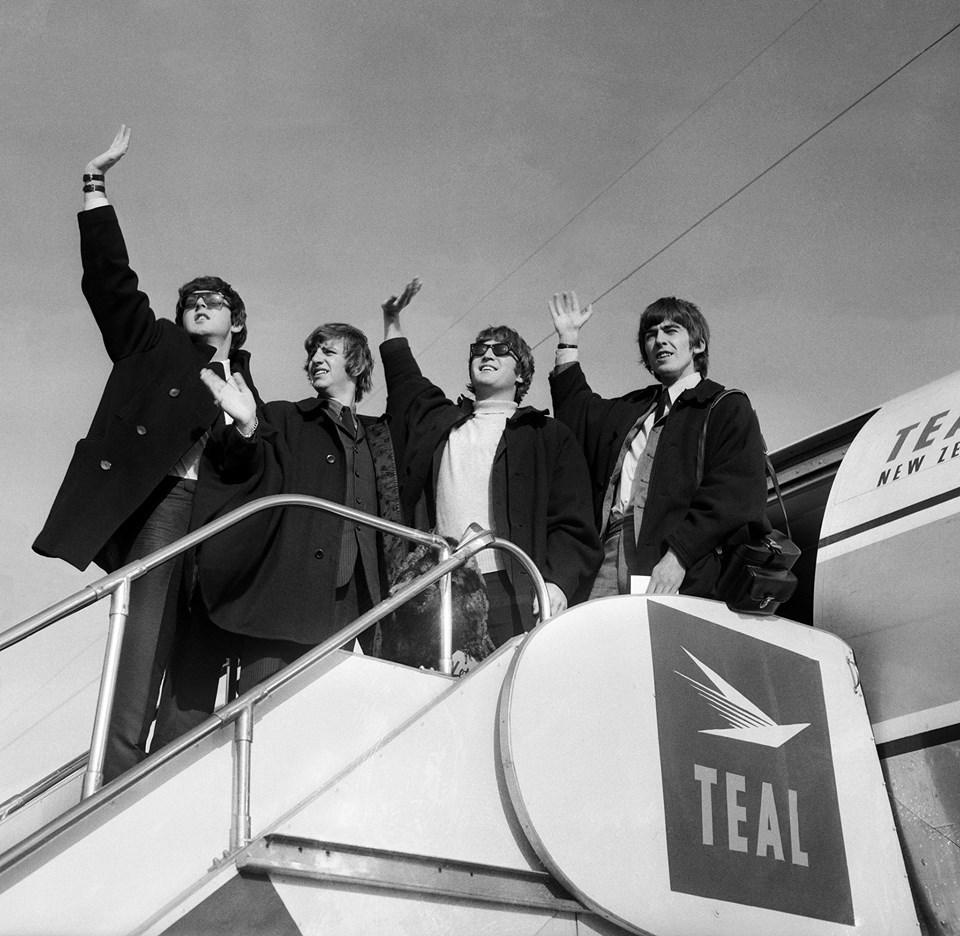
by David Levinson
A gallimaufry is a kind of stew. Like any stew, it’s composed of a bunch of things thrown together and so has also come to mean any sort of hodge-podge. Since I haven’t been able to come up with some sort of overarching theme this month (and perhaps because, as I write this, I skipped lunch and it’s a couple of hours until dinner), let’s just look at the mish-mash of things that caught my eye (and ear) this month.
The British Invasion continues
On June 12th, the Beatles were named Members of the British Empire. That’s the lowest level of honor granted by the British government, but unsurprisingly a lot of old fuddy-duddies are unhappy with popular musicians being so honored. Member of the Canadian House of Commons Hector Dupuis complained, “British royalty has put me on the same level as a bunch of vulgar numbskulls.” According to my research, apart from seven and a half years in the Canadian Parliament, Mr. Dupuis’ main contribution to society is selling insurance. I’m not sure he’s the one who ought to be complaining about the comparison.

James P. McCartney, George Harrison, John W. Lennon and Richard Starkey showing their medals. You didn’t think his parents named him Ringo, did you?
Sticking with music for the moment, lately I’ve really been enjoying For Your Love by the Yardbirds. It’s a catchy little number that’s been moving up the charts the last few weeks and unusually features a harpsichord. The band took over as the house band at the Crawdaddy Club in Richmond, England when the Rolling Stones went on to bigger things and then acted as the backing band for Sonny Boy Williamson when he toured Great Britain in early 1964. They’ve had a bit of airplay with some old blues numbers, but this is their first real hit. Alas, one man’s meat is another man’s poison. One of their guitarists, a young man by the name of Eric Clapton, has left the band, unhappy with the move to a more commercial sound. He’s since been replaced by Jeff Beck. Let’s hope that Mr. Clapton is content with the relative obscurity of the blues scene.

The Miracles of Technology
On June 14th, a test planned by American and French doctors and communications experts sent an electrocardiogram from a ship at sea to a hospital in France. The ECG was taken from a passenger aboard the SS France in the Atlantic Ocean and transmitted via facsimile machine first to Cornell University hospital, then RCA Communications, Intelsat, D'Liaisons Radiotelephotographiques de France and then to Boucicaut Hospital in Paris. The image that arrived in France was clear enough for doctors to use for diagnosis. Look for this technique to be used in earnest in the future.
![]()
Facsimile technology has been used in meteorology for several years. Its use in remote diagnostic medicine shows promise.
Eppur si muove
The British journal Nature dated June 19th included a paper by astronomers Gordon Pettengill and Rolf Dyce titled "A Radar Determination of the Rotation of the Planet Mercury". They have determined that the planet Mercury is not tidally locked to the sun, but rather has a rotation period of approximately 59 days. That means a day on Mercury is about two-thirds as long as its year. Bad news for Larry Niven, whose very first story, “The Coldest Place”, hinged on the planet always showing the same face to the sun, but those are the breaks in the science fiction game.
An IFfy stew
Speaking of science fiction (and the magazine Niven first appeared in) what is Fred Pohl putting on our plate in this month’s IF? Let’s take a look at the ingredients.

Retief makes his way across town. Art by Gaughan
Trick or Treaty, by Keith Laumer
Things are looking grim for the Terran cause on the planet Gaspierre. The planetary parliament is set to decide if they’re going to be neutral, on the side of the Terries, or support the warlike Krultch, and the presence of a Krultch warship heavily outweighs that of the CDT mission under Ambassador Sheepshorn. Anti-Terry riots are blowing up all over, and Krultch soldiers walk the streets with impunity.
We open with Retief using his usual good relations with the locals to get lodgings for a troupe of Terran entertainers (if four people can be said to constitute a troupe). On his way back to the embassy, Retief cripples a couple of Krultch soldiers (they did start it) and learns from the local police that the Terrans are confined to their embassy until the ambassador is due to make his speech to parliament. After a brief consultation with the ambassador, Retief escapes the embassy, makes his way across town and enlists the aid of the entertainers in tossing a monkey wrench in the Krultch plans. Will he succeed in tipping the balance in Earth’s favor? Of course, the only question is how. Will he win the favors of the lovely, red-headed acrobat with the tattoo? Unusually, no, or at least not on the page.

The Krultch captain gets the drop on Retief. Right where Retief wants him. Art by Gaughan
I’m on record as a fan of Retief, but even I have to admit that things are getting a little stale. To carry on with the stew analogy, this is an onion that’s gone a little spongy or a rubbery carrot. The means by which Retief and friends take the wind from the Krultch’s sails are deeply improbable, bordering on the ridiculous. On the plus side, Ambassador Sheepshorn is one of the best names Laumer has come up with in ages. Is that Sheeps-horn or Sheep-shorn? I suspect that the ambassador and the author have very different opinions on that. In any case, long-time readers of the series will likely find this one a bit dull, though newcomers might enjoy it more. However, it’s not the best entry point for the series. A low three stars.
Against the Odds, by John Brunner
On the planet Galrex, an apparent crank is making a scene outside the office of the Superintendent of Galactic Records, warning that the human race is in danger. Superintendent Motice Bain emerges from his office and agrees to listen to the man’s concerns.
Falkirk, as his name proves to be, once planned to make a career in archaeology studying the vanished civilization of the planet Gorgon. The story goes that the natives of Gorgon had learned to manipulate luck and ultimately bored themselves to death. The planet was originally found three or four hundred years earlier by one of the pioneering starscouts, Morgan Wade, who supposedly figured out the lost secret and ultimately became extremely wealthy. Eight or nine years before the time of the story and before Falkirk could go to Gorgon and begin digging, a starship made an emergency landing on the planet. It took several weeks for a needed spare part to arrive, but once the ship was repaired the crew managed to destroy all that was left of the ancient civilization when taking off. Now every member of that crew is the ruler of a planet. Falkirk is convinced that these ten men are going to take over the galaxy.
Using the example of the birthday problem, which shows that it takes a remarkably small number of people to ensure that two members of the group share a birthday, Bain points out to Falkirk that in a galaxy of two trillion people, it isn’t that unlikely for ten of them to become important. After a despondent Falkirk leaves, Bain gets down to business.
There’s a twist at the end of this tale that anybody who has been reading science fiction for more than a handful of years can see coming. It’s a reasonably well told story, but a far cry from the more modern sort of stories that Brunner is capable of writing. Apparently, IF is where he sends his more old-fashioned work. It’s not bad, it’s just not anything special. Three stars.
We Hunters of Men, by Bruce McAllister
Edmond Reud is out hunting scalps when he is attacked by another hunter. He kills the attacker and takes the other man’s scalp. Ignoring the “mind-prickling” that urges him to go toward the Minced Mountain, which touches the ocher-colored sky, he returns to the underground city to exchange his scalps for pellets. Eventually, he reaches the Minced Mountain and meets an old man trapped there by a broken leg. Without pellets, the old man has had his long-term memory return. Together, they solve the mystery of the “mind-prickling”.
Interspersed throughout this are naval communiques between a ship orbiting the planet Tinni and Base Roquefort. It seems that Tinni was one of twelve planets beset by the Judicians, who managed to close the planet in a charge field when they lost the war. The navy believes that the Judicans’ weapons were destroyed, but because they are physically weak they must have found some way to control the human population. They did manage to get a device through the field which will home in on charge field generators and send out cortex wave emissions to get humans to come and tinker with the generators.

The scalper scalped. Art by Giunta
This is McAllister’s second story, and it’s not very good. Clearly the pellets affect memory and are addictive, giving the Judicians a way to get the humans to kill each other, but I fail to see how the system was originally imposed. Further the tonal shift between the two narratives is rather jarring. That on the planet is somewhat grim and rather fitting to the circumstances, while the naval communiques are rather light and a bit jokey. On the other hand, McAllister is only 18 and does show some raw talent. If he spends some time working at his craft and honing his skills he could be a decent writer down the line. But this story? Two stars.
The Crater, by J. M. McFadden
Insurance investigator Johnny Andrews appears to be on vacation in Hawaii. Actually, he’s on the trail of a group that has hijacked two shipments of irillium somewhere between the asteroids (at a guess, it’s never specified) and landing at the docks in North Africa. Waikiki is a good spot to observe the ships entering parking orbit and firing their retrorockets for landing. He figures he’s on the right track, since a couple of suspicious characters have started watching him.
After observing the next hijacking from out beyond the surf line, he manages to get pictures of the two goons, but they grab him before he can contact his home office. He’s bundled into an interisland subway and taken to Wailuku, the main city on the rather rural island of Maui. Johnny escapes and takes refuge in Fenner’s Grill, the best Mexican restaurant in the islands run by a fellow of Chinese extraction who goes by the name Manuel. From Manuel (who is seemingly related to everyone on the island), Johnny learns of the mysterious group which has taken over the ranch in Haleakala crater. With Manuel’s help, he infiltrates the ranch and sets out to thwart the hijackers for good.

Manuel and Johnny discover some really high tech cattle ranching. Art by Nodel
McFadden is this month’s first-time author. According to Fred Pohl, he’s a former naval officer and has already sold another story to IF. Beginning authors are often advised “Write what you know.” I’d bet that McFadden spent a fair amount of time stationed in Hawaii and was likely a radar officer. Anyway, this one was a rather fun adventure tale with a good dose of humor. Maybe a bit of Keith Laumer influence here. Also Manuel is a great sidekick who feels like a real islander without being an offensive stereotype. Three stars.
Patron of the Arts, by Fred Saberhagen
As the Berserker fleet closed in on Sol, the artistic treasures of Earth were loaded aboard the museum ship Franz Hals to be carried to safety at Tau Epsilon. Aboard are a two man crew and famous artist Piers Herron, a man who has lost all interest in living and with it his ability to create. The ship is captured by a Berserker and the crew killed, but Herron is kept alive for observation. He attempts to paint the Berserker and he and the Berserker, using one of its smaller remote units, discuss the meaning of art on the basis of Titian’s Man with a Glove.
 Herron tries to capture his captor, while the subject looks on. Art by Gaughan
Herron tries to capture his captor, while the subject looks on. Art by Gaughan
I mentioned above that Retief is getting stale. Saberhagen has certainly avoided that problem in his Berserker series. Each of the stories has been very different, even when the settings have been similar, such as one or more people being held captive by the great killing machines. That’s most likely because these stories are really about people. In the hands of many other authors, this series would be one massive space battle after another, while with Saberhagen the one story that actually was about a space battle had a tight focus on some of the people involved.
This is an ambitious story, and while that ambition carries it a long way, it doesn’t quite hit the mark. There’s a subplot about a stowaway that really doesn’t work. If Roger Zelazny wrote a Berserker story, this might well be it, and he might have gotten all the way to where Saberhagen was trying to take it. A high three stars, and I mourn what could have given it that fourth.
Skylark DuQuesne (Part 3 of 5), by E. E. Smith
As DuQuesne watches, Dick Seaton launches a brutal counterattack against the mysterious force that struck at the end of the last episode. The Skylark of Valeron, grievously damaged, beats a hasty retreat, and DuQuesne slinks away toward Earth. Seaton has identified their attackers as Chlorans, the bad guys from the last book. Apparently, intelligent life which develops on any Earthlike (or Tellus-type, as Smith would have it) world will be human. They might be green or squat and hairless, but still human. Any intelligent life that develops on a world with a chlorine atmosphere will be Chlorans, and so on. Look, if you shout at every bit of nonsense science in this thing, you’ll lose your voice and probably frighten your neighbors. Just go with it.

The Skylark of Valeron takes a licking and keeps on ticking. Art by Gray Morrow
Seaton hatches a plan to find an enslaved human world in the Chloran controlled galaxy and find or create a resistance. That will give the Skylarkers a base of operations to fight the Chlorans. Naturally, all of the men volunteer to be the one to go down and carry out the plan while all of their wives object. They leave the choice of the best person to the ship’s Brain. It, of course, chooses Seaton. He goes down to the planet chosen by the Brain, meets the resistance, turns them into an effective fighting force and snatches the planet from the clutches of those humans who willingly serve their Chloran masters.
Meanwhile, DuQuesne returns to Earth and looks up Stephanie “Hunkie” de Marigny, brilliant scientist and the one woman who can come close to piercing the armor of cynicism and disdain he’s wrapped himself in. While his agents buy up all the materials he needs to build his own Valeron, Blackie and Hunkie go on a date (Dutch at her insistence). Afterwards, he hotfoots it off to the opposite side of the universe from the Chloran galaxy, finds an uninhabited Earthlike world and, using the plans he got from Seaton, builds his new ship, which he dubs the DQ.

Dick Seaton settles a labor dispute with his foreman. Art by Gray Morrow
Although the “wherefores” continue to fly, this installment is a small step up from last month. In fact, the stuff involving Seaton setting up his resistance movement actually isn’t all that bad. Of course, Smith crams a novel’s worth (or at least a novella’s) of material into 15 or 20 pages. DuQuesne also moves back toward being a slightly more complex villain than he was last time. Two stars.
Summing Up
So, what does the dish that Fred Pohl has given us look like overall? A couple of ingredients that aren’t as fresh as they might be, but are still acceptable; a couple of tasty morsels, not quite gourmet but good; one that’s not very good, but under normal circumstances would be drowned out by the other ingredients; and then there’s the giant lump of meat that’s really gone off at the end. Outside of Skylark, there does seem to be a slight uptick in quality over the way things have been over the last year or so. That or Skylark is making the rest of the stuff look good by comparison.
Every cloud, so they say, has a silver lining. Skylark has been a big black cloud lowering over IF for a while and will continue to do so for a couple of months. The demands it has made on space (originally intended to be just three installments) has made the editorial team take a look at some of their production procedures. Starting next month IF will have 32 more pages in every issue. Fred says that’s enough for two more novelettes, four or five short stories, a complete short novel, or an extra serial installment. Best of all, the price is staying at 50¢. Five months of Doc Smith is a heavy price to pay, and 32 pages isn’t going to make up for Amazing and Fantastic going bimonthly and running more reprints, but it’s a step in the right direction.


![[July 2, 1965] Gallimaufry (August 1965 <i>IF</i>)](https://i0.wp.com/galacticjourney.org/wordpress/wp-content/uploads/2020/06/IF-cover-1965-08.jpg?resize=649%2C372&ssl=1)

![[November 25, 1964] The Times They Are a-Changin’… <i>Science Fantasy December 1964/January 1965</i>](https://i0.wp.com/galacticjourney.org/wordpress/wp-content/uploads/2019/11/SF68.jpg?resize=672%2C372&ssl=1)








![[November 22, 1964] A Special Gift](https://i0.wp.com/galacticjourney.org/wordpress/wp-content/uploads/2019/11/sadallovercover.jpg?resize=612%2C372&ssl=1)


![[July 28, 1964] Beatlemania Arrives Down Under!](https://i0.wp.com/galacticjourney.org/wordpress/wp-content/uploads/2019/07/640728Beatles-Off-to-NZ.jpg?resize=672%2C372&ssl=1)

